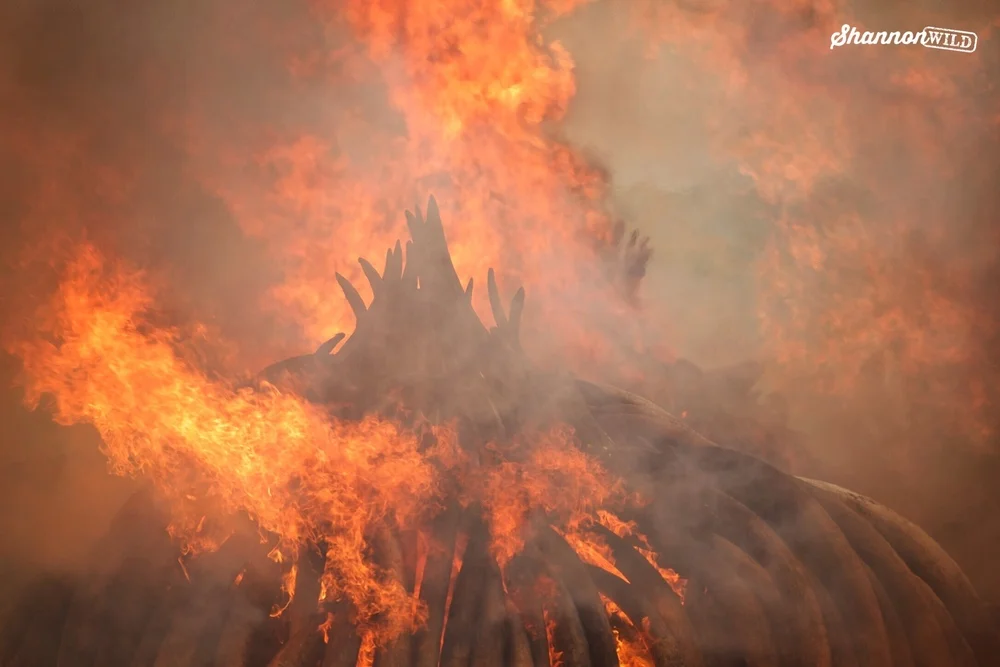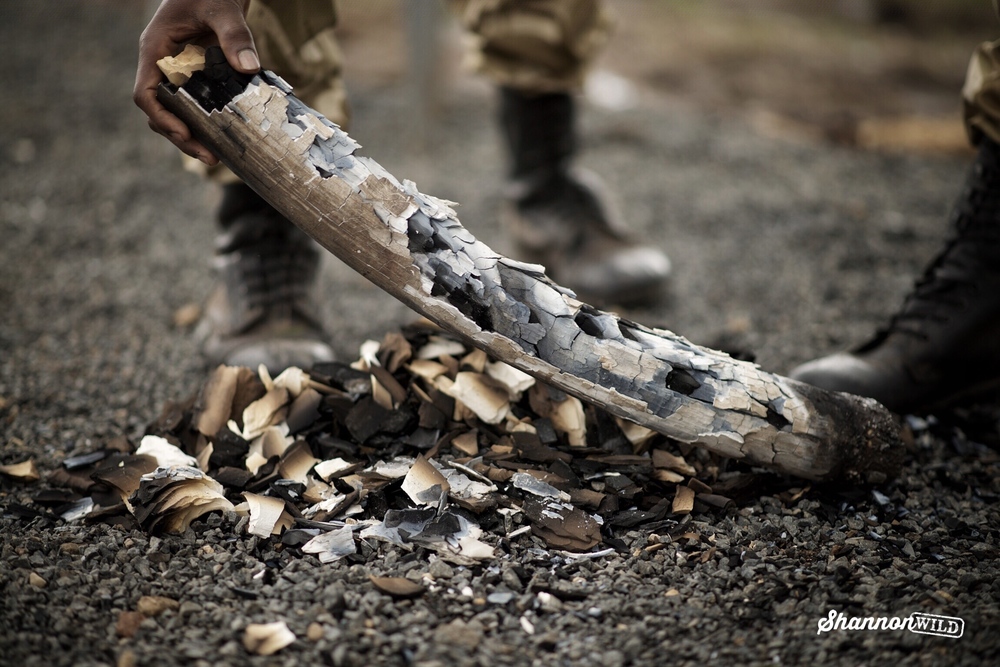It was a Saturday night, April 30 2016, when flames and smoke filled the sky as Kenyan President Uhuru Kenyatta set fire to over $172 million worth of illicit elephant and rhino tusks. Twelve ivory towers smouldered into the night in Nairobi National Park, in one of the most effective demonstrations in history protesting the record number of illegal slaughterings taking place in Africa. The price of ivory has taken a sharp increase in value and is in demand on the illegal black market, leading to tremendous massacres throughout Africa's rainforests as poachers search for these magnificent creatures.
PHOTO: Shannon Wild
According to CNN, it took Kenyan Wildlife Services officials ten days to construct and erect a crematorium that housed 105 tons of elephant ivory, 1.35 tons of rhino horn and exotic animal skins among other illegal wildlife possessions. As thick black and grey smoke filled the sky, the message was loud and clear throughout Kenya that night-- Africa would rather lose an estimated $172 million dollars than shut their eyes and turn their backs on the injustice that claims the lives of thousands of endangered species each year. According to the Born Free foundation, an organization devoted to rescuing and protecting vulnerable species in the wild, an elephant is killed for its tusks every 15 minutes because of poaching. Thirty-five years ago, Africa had more than 1.3 million elephants roaming freely. Now, due to ruthless poaching, nearly 70% of these have been lost and numbers have plummeted to less than 420,000 as poachers stop at nothing to secure an ivory deal.
PHOTO: Shannon Wild
On the night of the burn, cinematographer and photographer Shannon Benson, who also goes by Shannon Wild, was in Kenya on behalf of Animal Avengers, a non-profit currently supporting anti-poaching units, vets, various people and projects in Africa who are protecting and saving endangered animals, supporting the surrounding communities, educating youth and working at government levels to create lasting change. Benson was assigned to document a variety of programs throughout Africa, including the Ivory Burn. Leading up to that night, the Ivory Burn was widely publicized and Benson was immediately captivated by its potential.
That night, she set out amidst thousands of others who gathered to watch President Uhuru Kenyatta drop the first match. "Documenting the burn has, to date, been the most emotional assignment I've been involved with, " Benson said. "I encounter many confronting wildlife situations in my line of work including poached animals, but the sheer volume of elephant and rhino represented at this one event was completely overwhelming."
PHOTO: Shannon Wild
As the night sky lit up in smoke and ash, representing the lives of thousands of animals lost to a senseless cause, there was a sense of victory in the air, as Kenyans declared that ivory, unless on a living elephant, has no value in African society or culture. "Over 40,000 elephants were represented at this burn, and that's only what has been confiscated," Benson said. "Every tusk once belonged to a unique individual who is now lost. With every horn taken, the world is one step closer to exterminating a species marked by a tragic loss of life and genetic diversity."
PHOTO: Shannon Wild
Last year, cinematographer and photographer Martin Buzora lived and worked in Kenya while shooting a documentary illustrating the powerful work of an organization called Running For Rangers, an organization that works tirelessly to cease illegal poaching activities and the merciless killing of endangered animals including the black rhinos and elephants whose tusks were set aflame on Saturday. Seeing the efforts towards anti-poaching and also the devastation that it brings upon an entire continent, Buzora calls the weekend's burn a giant step in the right direction.
"It was an important event to make people ask questions," Buzora said. "The image of mountain upon mountain of ivory set ablaze is not something you see every day and any event that allows this issue to remain in the spotlight is a victory."
All photos taken by Shannon Wild for Animal Avengers
This article was first published May 6, 2016.





